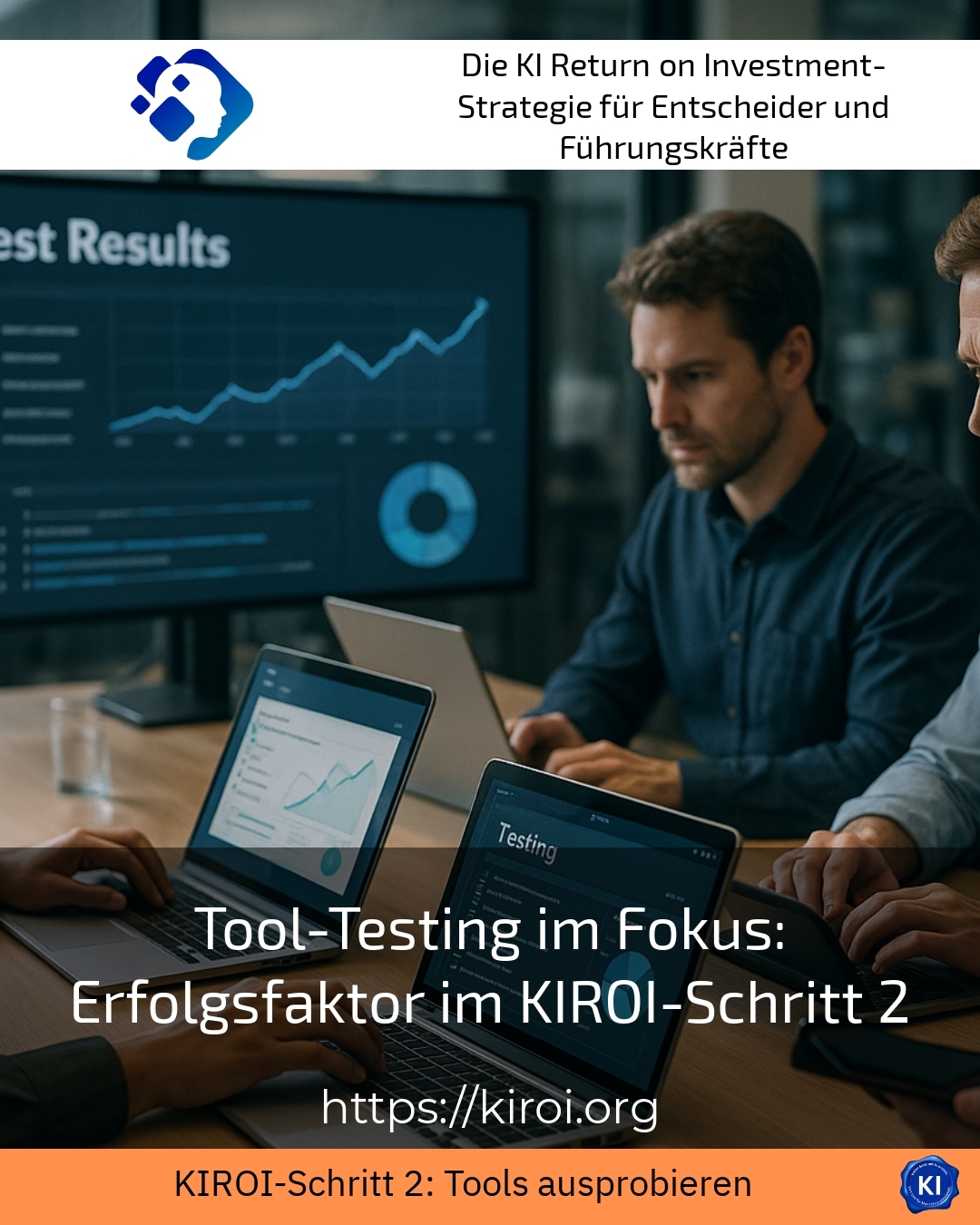Today, tool testing is a central building block on the way to sustainable project success in the field of modern, data-driven tools. If you want to make a smart choice, focus on structured practical tests in KIROI step 2 - and thus show which systems are effective in your own context. Decision-makers and project teams often report major challenges: The variety of options is enormous, and the integration of new technologies is a challenge for the entire day-to-day operations. This is precisely where tool testing positions itself as a bridge between theory and practical implementation, because it delivers targeted, practical findings and identifies the right tools for individual requirements.
Tool testing as a process: from use case to practical test
The first step is to look at your own practice: which tasks should be automated, which processes do you want to improve? Clearly defined use cases form the basis for successful tool testing - this is the only way to specifically test and evaluate relevant functions [1]. A medium-sized consulting company, for example, identified specific analysis steps during coaching that were to be raised to a new level using AI. Tool testing provided clarity as to whether the selected tools not only score points technically, but can also be used intuitively and how they fit into existing systems.
In the production area, it was shown that tool testing goes far beyond mere functional testing. Early warning systems for machine faults were tested in various scenarios to check how reliably they predict failures and reduce downtimes. Institutions in the healthcare sector also use tool testing to test digital documentation systems under real-life conditions - usability is just as important here as stability in everyday operation.
A third example from the retail sector: an e-commerce platform used tool testing to check how well different AI tools are suitable for personalised product recommendations, fraud prevention and stock analysis. The results were decisive for a lean, targeted introduction of new functions.
BEST PRACTICE with one customer (name hidden due to NDA contract) A medium-sized company from the consumer goods industry used tool testing to support the introduction of a new analysis solution. The focus was on the question of how complex analyses could be automated and how well the system could be integrated into the existing IT infrastructure. The teams tested various implementations together, optimised workflows and thus built up confidence in the new processes. In the end, tool testing not only ensured better data quality, but also greater acceptance throughout the company.
Recommendations for effective practical steps in tool testing
Tool testing is particularly effective if you do not see it as a one-off test phase, but embed it as an ongoing process. Start small: select three to five specific tasks that are crucial to your business success and test them with different tools [3]. This will help you avoid getting lost in the multitude of functions and gain real practical experience.
Tool testing works best in a team. Involve the people who will later work with the system - this way, important aspects such as usability, acceptance and integration become visible at an early stage. Transruption coaching helps you to organise tool testing as a collaborative learning process and to evaluate feedback in a targeted manner.
Remember that no tool is ideal for all tasks. Tool testing helps to clearly recognise differences and find the right solution. This will save you valuable time and resources [2].
Industry focus: Tool testing in practice
Experience shows that tool testing has different focuses in different areas. In production, the aim is often to enable precise predictions of machine statuses and thus avoid breakdowns. One manufacturer, for example, tested various AI solutions for quality control. Tool testing enabled the best tools for image recognition and error analysis to be identified and integrated directly into production [2].
In the office environment, data protection and user-friendliness take centre stage. Tool testing shows how well automation solutions fit into office processes and whether they really make daily work easier. Acceptance of the tools within the team is a decisive factor that should always be checked during testing.
Large retail companies use tool testing to continuously check and optimise the performance of e-commerce solutions. This allows strengths and weaknesses to be specifically identified in order to increase customer satisfaction and therefore sales [1].
My analysis
Tool testing is more than just a functional test - it creates clarity, security and orientation in a world full of technical possibilities. Those who systematically test tools in their own practice avoid bad investments and ensure that new technologies really contribute to business success. Clients repeatedly report how important a clear structure is for tool testing, both for the success of the project and for acceptance within the team.
Transruption coaching supports you in establishing tool testing as an integral part of your innovation process. This gradually creates a culture in which new tools are not only introduced but also utilised sustainably. The examples from various industries make it clear: tool testing is a key factor for digital transformation and should not be missing from any project documentation.
Further links from the text above:
Tool testing for decision-makers: successfully utilising KIROI step 2 [1]
Tool testing: KIROI step 2 - try out AI tools efficiently now [2]
How to AI test for dummies [3]
For more information and if you have any questions, please contact Contact us or read more blog posts on the topic Artificial intelligence here.















